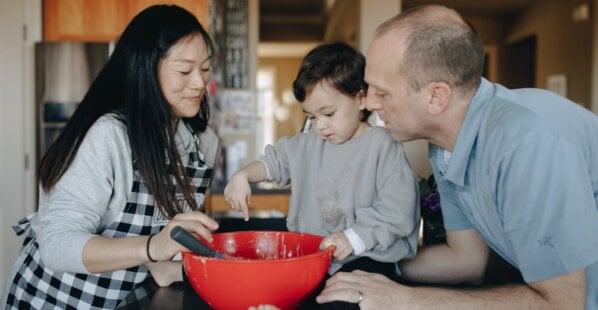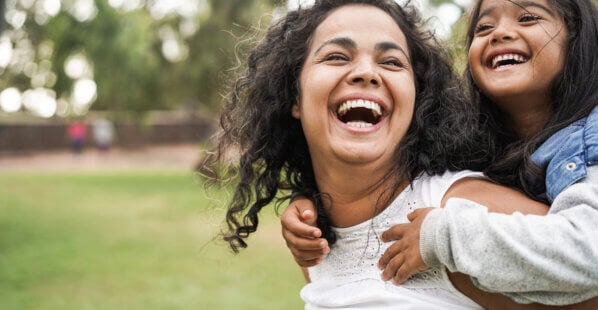Helping Your Child Cope With the Death of an Animal Companion
The death of an animal companion can be a distressing experience, especially for young children, because dogs, cats, and others are integral members of their human families, providing unconditional love and companionship. When someone important in a child’s life dies, it’s critical to help them understand, process, and grieve this loss.

By maintaining open communication, engaging in meaningful activities, and honoring your own emotions, you can help your child navigate their grief, cherish the memory of their beloved cat, dog, or other animal, and encourage their developing compassion in the process. Read on for tips on supporting young children during this challenging time.
Be Clear and Honest
When discussing the death of an animal companion with your child, use simple and accurate language. Avoid euphemisms like “has gone to sleep and won’t wake up,” “passed away,” or “got a really bad owie.” Such phrases can confuse children, especially those under the age of 5, or even cause them unnecessary fear because they think very literally. They might worry about going to sleep themselves, traveling, or even sustaining minor injuries. Instead, be clear about what death is in a gentle and straightforward manner.
For example, you might say, “Boo’s heart stopped beating. Her body didn’t work anymore, and she died. That means we won’t see her or be able to pet her here at home again.”
If your family’s cat, dog, or other animal will be experiencing euthanasia, it can be helpful to include children in the process, depending on their age and temperament. Allowing them to be present shows them firsthand how responsible guardians can peacefully and painlessly end their animal companion’s suffering. Euthanasia is a final act of love, and children may better understand what it means by witnessing it firsthand rather than simply being told about it afterward. This might not be right for every family, but it can be meaningful and helpful for some of them.
Let Your Child Know It’s OK to Be Sad
Children react to the loss of their animal companions in various ways. Some may show deep sadness, and others might not seem very affected (which doesn’t necessarily mean they aren’t upset). Both reactions are normal. Reassure your child that it’s OK to feel sad. You could say, “Are you sad that Boo died? I’m sad, too. Would you like to cuddle with me and read a story? Do you think that might help you with your sadness?”

Communicate With Caregivers
It’s important to inform the people in your child’s life, such as teachers and other caregivers, about the death in your family and your plan to support your child. This ensures that they are aware of the situation and can prepare to provide appropriate help, support, and understanding during this sensitive time.
Retell Stories and Include Memories
Grieving is a process, and children may need to retell stories, include their companion’s name in songs, and bring up memories regularly. This helps them process their grief and come to terms with their loss. Just as we talk about and share memories of human family members who have died, it can be helpful to mention your dog or cat’s name frequently, tell stories, and share fond memories. This can normalize the grieving process and help children feel connected to their loved one’s memory.
Read Books Together
We all know that reading with children can create connections and educate, but it can also help them process their emotions related to the loss of their animal family member. Books that convey that there’s no “right” way to feel or express sadness can help kids understand that it’s normal to experience a mix of emotions and that grief is natural and part of the healing process. Here are some titles to explore:

Be Gentle on Yourself as a Parent
The loss of an animal companion can be deeply emotional for parents, too, and that’s perfectly understandable. This might be the first time your child is experiencing loss, but your relationship with your cat or dog might predate your child’s. It’s important to make space for your own grief and emotions. Taking time to reflect alone or to share your heartache with sympathetic family and friends can be a great source of comfort. By honoring your feelings, you’re also modeling healthy emotional expression and empathy for your child—parent goals!
Trust Your Instincts and Go With the Flow
Every child and every situation is different from any other. As a parent, you know your child best and can make the most informed decisions to support them through their grief. Trust your instincts and be attuned to their unique needs and responses. Healing from the loss of an animal companion isn’t always straightforward. It’s perfectly normal to experience ups and downs, and it can be helpful to share this with children. They might feel overwhelmed with sadness and want to cry one moment and then feel OK the next. Reassure them that all their emotions are valid and completely normal. No feeling is permanent.

Remember Together
Creating meaningful memories and engaging in activities that honor your dog, cat, or other animal companion can be therapeutic for the whole family. There are dozens of easy yet heartfelt ways to celebrate your loved one’s life, several of which are highlighted in this video in memory of Mocha:
Some families hold a funeral or memorial service for their animal companion. If there’s an established “pet” cemetery nearby, people can pay to have their dog’s or cat’s remains buried and marked with a personalized grave marker, much as many of them do for their human family members. This provides a peaceful place to go and spend time with the memory of their loved one. Some families bury their animal companion’s remains in their own backyard (in accordance with local laws), which keeps them close and easy to visit. And some people choose to have their dog’s or cat’s remains cremated so that they can keep their ashes inside with them or sprinkle them in a place that their friend enjoyed. But not everyone wants to receive their animal companion’s ashes back or visit a grave, and that’s perfectly OK, too. Talk to your child about the reasons behind your family’s choices and try to make space for their input as well.
Some Simple, Meaningful Ways to Memorialize Your Animal Companion
- Make a pawprint impression: Making a pawprint impression with air-dry clay creates a tangible, lasting keepsake. Ink can also be used to create a piece of frameable artwork. It’s a simple activity that allows children to remember their friend in a physical and personal way. Some veterinarians and animal cremation companies offer this service, too.
- Make a photo frame: You can encourage your child to create a frame for a picture of their beloved friend. This activity not only serves as a creative outlet but also provides a way for children to keep their animal companion’s memory alive through a visual reminder.
- Draw, paint, or write: Creative expression can be a tremendously healing outlet for people of all ages, and children often express their emotions through art and writing. You can encourage your child to draw or paint pictures of their animal friend or write a story or poem about their life, the time your family shared together, and the joy they brought to the world.

- Create a remembrance journal: Many remembrance journal templates available online include prompts to help you relive happy memories and focus on the joy you shared with your animal companion. Of course, you could also create your own more personalized prompts. Depending on your child’s age, responding to the prompts together could be a meaningful way to share memories. You could also have your child help decorate the journal cover or choose pictures to include.
- Make a memorial donation to an animal shelter: Engaging in acts of kindness is a powerful way to honor your animal companion’s contributions to your family. Consider setting up a lemonade stand and donating the proceeds to your local animal shelter. You could also donate food, blankets, towels, or toys. Donating to the shelter or rescue group that made it possible for you to meet your animal companion can be a deeply meaningful way to thank them while honoring your animal friend.
- Learn about cultural events honoring the dead: Learning about traditional cultural events that honor deceased loved ones, like the Obon festival or Día de los Muertos (Day of the Dead), can be a meaningful way to remember and celebrate your animal companion’s life. Your family can honor these and similar holidays without actually adopting them by visiting festivals and museums and appreciating their rich history. This can also provide an opportunity to engage in age-appropriate discussions with your children about cultural sensitivity.

*****
When they’re ready, let your child know that opening their heart to another animal companion is perfectly OK. The beloved friend they lost will always have a special place there, and while no one can replace them, there’s always room for new friends.
And when the time comes to welcome another animal companion into your home, be sure to visit a local animal shelter or rescue organization and never to buy an animal from a pet store or breeder.





Under 13? Ask your parents bee-fore you continue!